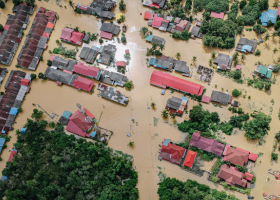Disaster Management for Protection and Preservation of Public Records

Especially those that are permanent, high-value, or vital. Ensure you have secure backups stored away from risk areas and develop a salvage priority list for effective damage resolution. Regularly test your disaster plan, raise staff awareness, and document near misses to improve future responses.
In the event of a disaster, swift action is essential. Air-dry public records within the first 48 hours, especially those that are water-affected. For records that cannot be dried in this timeframe, freezing is the best option to prevent further damage. Record types like paper, photographic materials, and computer media require different salvage methods, including air drying, freezing, or keeping wet until specialists can intervene. It's important to handle wet or damaged records with care and follow the proper procedures to ensure minimal deterioration.
Once the public records are dry, continue to monitor them for signs of dampness or mould. Reinstating them to permanent storage should only occur once both the records and storage areas are completely dry and mould-free. In cases of severe contamination or extensive damage, consider seeking professional help. Regular reviews and reporting of the incident will help refine future disaster response strategies and ensure better protection for public records in the future.
